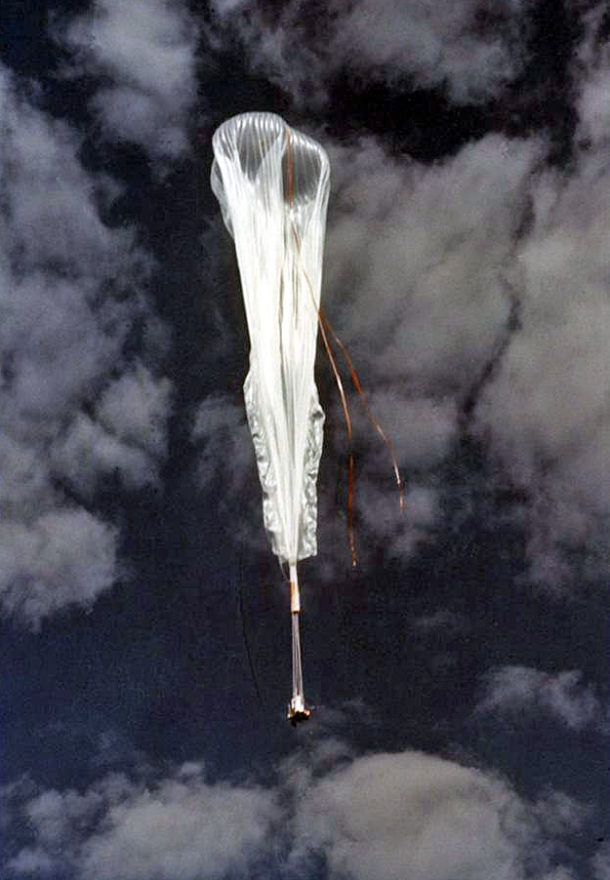
Sixty-one years ago this month, USAF Captain Joseph W. Kittinger successfully completed the first Manhigh aero medical research balloon mission. During his 6.5-hour flight, Kittinger reached an altitude of 95,200 feet above mean sea level.
Project Manhigh was a United States Air Force biomedical research program that investigated the human factors of spaceflight by taking men into a near-space environment. Preparations for the trio of Manhigh flights began in 1955. The experience and data gleaned from Manhigh were instrumental to the success of the nation’s early manned spaceflight effort.
The Manhigh target altitude was approximately 100,000 feet above sea level. A helium-filled polyethylene balloon, just 0.0015-inches thick and inflatable to a maximum volume of over 3-million cubic feet, carried the Manhigh gondola into the earth’s stratosphere. At float altitude, this balloon expanded to a diameter of roughly 200 feet.
The Manhigh gondola was a hemispherically-capped cylinder that measured 3-feet in diameter and 8-feet in length. It was attached to the transporting balloon via a 40-foot diameter recovery parachute. Although compact, the gondola was amply provisioned with the necessities of flight including life support, power and communication systems. It also included expendable ballast for use in controlling the altitude of the Manhigh balloon.
The Manhigh test pilot wore a T-1 partial pressure suit during the mission. The garment provided protection in the event that the gondola cabin lost pressure at extreme altitude. The pilot was connected to a variety of sensors which transmitted his biomedical information to the ground throughout flight. This allowed medicos on the ground to keep a constant tab on the pilot’s physical status.
The flight of Manhigh I took place on Sunday, 02 June 1957 with USAF Captain Joseph W. Kittinger as pilot. The massive balloon carrying Kittinger and his gondola was released at 11:23 UTC from Fleming Field Airport, South Saint Paul, Minnesota. In less than 2 hours, Kittinger’s huge balloon reached its design float altitude of 95,200 feet above sea level.
Radio communication problems complicated the Manhigh I mission. While Kittinger could hear the ground, the ground could not hear him. However, the resourceful pilot managed to work around this issue by communicating with the ground via Morse code.
Though balloon, gondola and pilot were functioning quite well, the Manhigh I mission had to be cut short due to rapid depletion of the gondala’s oxygen supply. Post-flight investigation revealed that this anomaly was caused by accidental crossing of the oxygen supply and vent lines prior to the flight.
Kittinger made a safe and uneventful landing near Indian Creek, Minnesota; located roughly 60 nm southeast of the launch site. The recovery crew was quick to the scene and extracted the plucky pilot from the sealed balloon gondola which had fallen over on its side. The official mission elapsed time (MET) was recorded as 6 hours and 32 minutes.
The flight of Manhigh I was a significant technical accomplishment that materially contributed to the advancement of manned spaceflight. Indeed, a TIME Magazine article, entitled “Prelude to Space” and dated 17 June 1957, captured the essence of the achievement. A man had been subjected to space-equivalent physiological conditions for a protracted period, had functioned well in that environment, and then returned safely to earth without ill effect.
For his significant efforts during the Manhigh I mission, Captain Joseph W. Kittinger received the USAF Distinguished Flying Cross.
